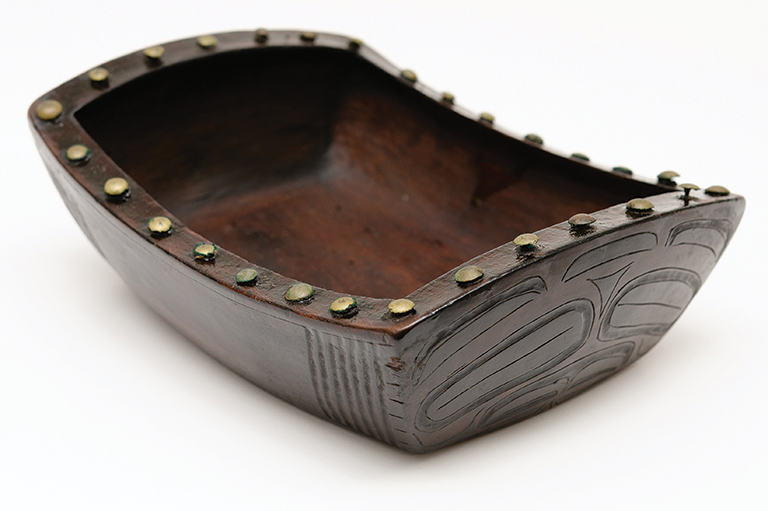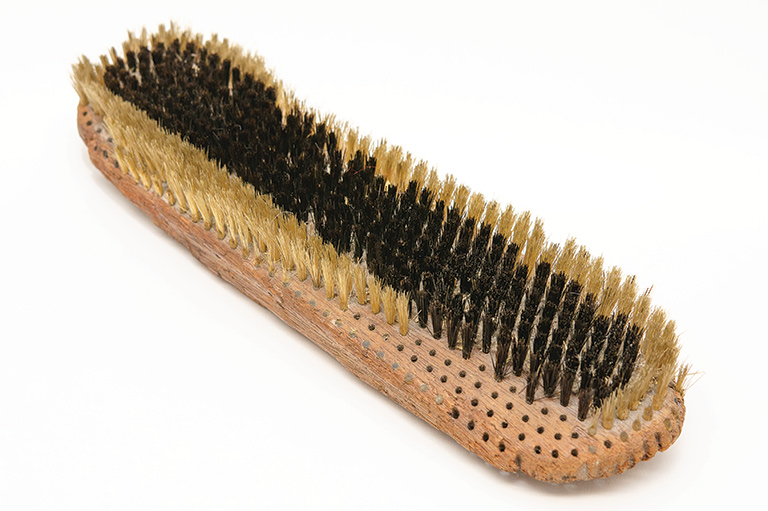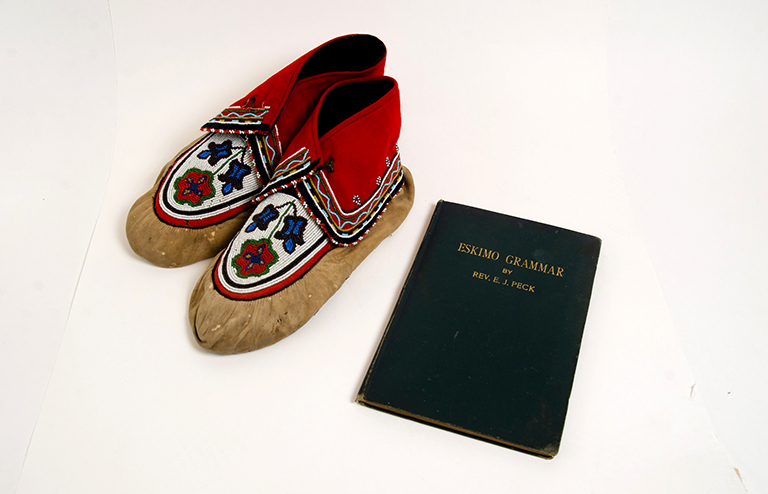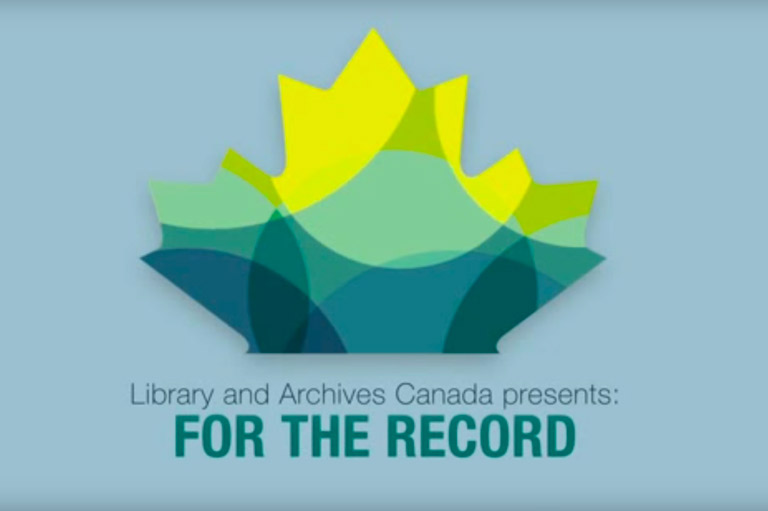Haida Feast Bowl

This feast bowl was carved from a single piece of cedar, and the rim was decorated with brass tacks. Both ends feature a formline carving of a thunderbird, and there are additional carved lines on the sides. Bowls like this were used at feasts to hold food or eulachon oil — the latter from a small fish also known as candlefish and traditionally used by First Nations for food and ceremonial purposes. In this bowl’s case, grease remains soaked into the wood, making parts of it feel a bit sticky.
British physician and botanist Charles F. Newcombe collected objects from peoples of the Northwest Coast, and these items found their way into many museum collections around the world, including the HBC Museum Collection. He obtained this bowl sometime between 1895 and 1901 at Kaigani, the name given to a group of harbours near Haida settlements on Dall Island, Alaska, north of Haida Gwaii.
As is the case for many early collectors, Newcombe’s practices are rightfully being questioned as Indigenous nations work to find out where their belongings have ended up and how they were acquired. My current research with the HBC Museum Collection involves delving into the archives to try to answer these important questions regarding people who obtained items for the Hudson’s Bay Company.
With 7 uniquely curated newsletters to choose from, we have something for everyone.
Canada's History magazine was established in 1920 as The Beaver, a Journal of Progress. In its early years, the magazine focused on Canada's fur trade and life in Northern Canada. While Indigenous people were pictured in the magazine, they were rarely identified, and their stories were told by settlers. Today, Canada's History is raising the voices of First Nations, Métis and Inuit by sharing the stories of their past in their own words.
If you believe that stories of Canada’s Indigenous history should be more widely known, help us do more. Your donation of $10, $25, or whatever amount you like, will allow Canada’s History to share Indigenous stories with readers of all ages, ensuring the widest possible audience can access these stories for free.
Any amount helps, or better yet, start a monthly donation today. Your support makes all the difference. Thank you!
Themes associated with this article
Advertisement









